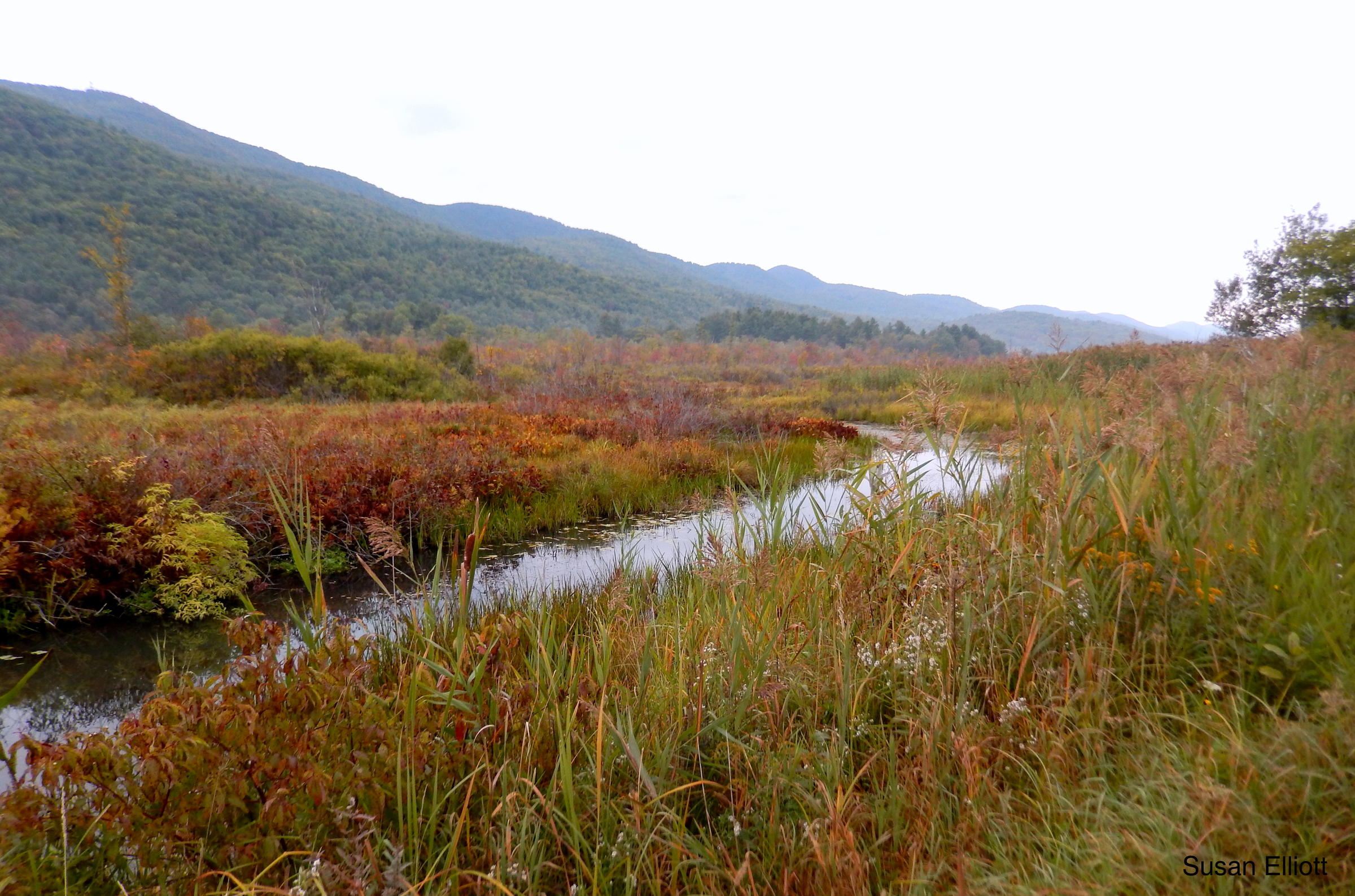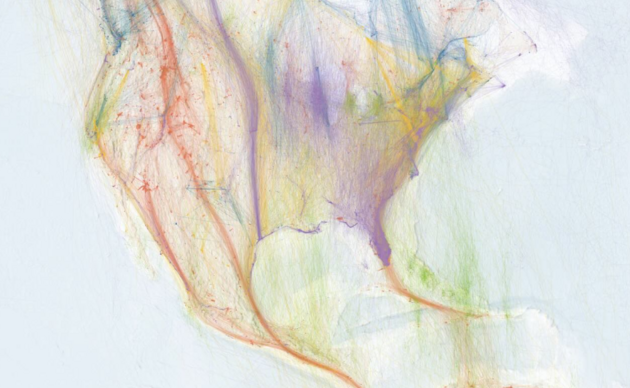Audubon Vermont worked with the state's eight Audubon Chapters, state agencies, NGO's, local birders and other conservation-minded volunteers in identifying and nominating Important Bird Areas (IBAs) throughout the state. The nomination and designation phase (Phase I) proved to be a successful collaboration of people and resources that has resulted in 17 IBAs and four IBA Complexes (IBAs focusing on individual species at multiple sites). These IBAs now form the basis of Audubon Vermont's conservation efforts designed to protect birds and the habitats critical to their survival.
Vermont's Important Bird Area Program is currently working on Phase II of the program which focuses on completing the Vermont IBA Technical Report along with supporting and developing monitoring projects at Vermont's IBAs. These projects include regular monitoring of IBAs by local chapters, the Vermont Marshbird Monitoring Program and participation in the Vermont Breeding Bird Atlas.
By creating a sense of ownership between IBAs and chapters, NGO's, and the birding community, Audubon looks to make the Vermont IBA Program a key component of avian conservation in the state. To this end Audubon is actively integrating the Vermont IBA Program with the North American Bird Conservation Initiative (NABCI).
Berlin Pond (Berlin/Montpelier)
Mountain lake and associated forest and wetlands (900 acres).
Undeveloped shoreline and no motorized boats. Municipal water supply.
Important species include: Common Loon, Pied-billed Grebe, Sora, Goshawk.
Bragdon Preserve (Woodstock)
VT Institute of Natural Science (VINS)
Upland forest, fields and meadows (80 acres)
Location of VINS bird banding station which has been operated since 1981.
More than 40,000 birds banded, approx. 120 different species.
Dead Creek Wildlife Management Area (Addison County)
State managed wetlands and associated forests and agricultural fields (3000 acres).
Breeding location for state endangered species, migratory stopover.
Important species include; the endangered Osprey and Upland Sandpiper, the threatened Black Tern, Snow and Canada Goose, Grasshopper Sparrow and numerous shorebirds.
Delta Park (Colchester)
River bottom delta and associated wetlands (55 acres).
Migratory stopover for terns, passerines, shorebirds and waterfowl.
Important species include; Common Tern, 23 species of shorebirds and large concentrations of waterfowl.
Herrick's Cove (Rockingham)
River delta and associated riparian habitat along Connecticut River (395 acres).
Migratory stopover, more than 220 species observed.
Important species include; large diversity of migratory landbirds, shorebirds and waterfowl.
Lake Bomoseen/Hubbardton Marsh (Hubbardton)
Lake and associated wetlands (470 acres).
Breeding location for rare marshbirds and high density of breeding waterfowl.
Important species includes; Least Bittern, Sora, Wood Duck and Pied-billed Grebe.
Little Otter Creek Wildlife Management Area (Ferrisburg)
Wetland and associated riparian and lacustrian habitats
Breeding location for state endangered and threatened species and marshbirds.
Important species include; endangered Osprey, American and Least Bittern and American Coot.
Mississquoi National Wildlife Refuge (Swanton)
River delta with extensive wetlands and bottomland forest (6300 acres).
Breeding location for state endangered and threatened species, waterfowl and marshbirds, also a migratory stopover for waterfowl, shorebirds and terns.
Important species include; Great Blue Heron, the endangered Osprey, threatened Black Tern, Pied-billed Grebe and Least Bittern.
Mud Creek Wildlife Management Area (Alburg)
Cattail marsh and associated forest (1200 acres).
Breeding location for state threatened species and marshbirds.
Important species include; the threatened Black Tern, American and Least Bittern and Common Moorhen.
Nulhegan Basin (Essex County)
Extensive boreal habitat with associated forests and wetlands (26000 acres).
Breeding location for state endangered and rare species.
Important species include; Spruce Grouse, Black-backed Woodpecker and Gray Jay.
Poultney River/ East Bay (West Haven)
Riparian and bottomland forest and associated wetlands adjacent to mountains (2600 acres).
Breeding location for state endangered species, site of long-term research.
Important species include; Peregrine Falcon, Golden-winged Warbler, Blue-gray Gnatcatcher, Whip-poor-will.
Sandbar Wildlife Management Area (Milton)
Large river delta with extensive wetlands and bottomland forest (1700 acres).
Breeding location for state endangered and rare species, and marshbirds, migratory stopover for waterfowl and shorebirds and site of long-term research.
Important species include; the endangered Osprey, Cerulean Warbler, Northern Harrier and Pied-billed Grebe.
South Bay Wildlife Management Area (Orleans County)
Lake and associated wetlands (1500 acres).
Breeding location for state threatened and rare species.
Important species include; the threatened Black Tern, Common Moorhen and American Bittern.
Victory Bog Basin (Victory)
Extensive boreal habitat with associated forests and wetlands (1500 acres).
Breeding location for rare and priority species.
Important species include; Gray Jay, Black-backed Woodpecker and Boreal Chickadee.
West Rutland Marsh (West Rutland)
Extensive cattail marsh (2100 acres).
Breeding location for rare and priority species.
Important species include; Least and American Bittern, Virginia Rail, Pied-billed Grebe and Blue-winged Warbler.
Young Island (Grand Isle)
State owned island in Lake Champlain (5 acres).
Breeding location for rare and priority species, primarily colonial waterbirds.
Important species include; Great Black-backed Gull, Black-crowned Night Heron and Herring Gull.
Common Tern Nesting Islands IBA Complex (Grand Isle and Franklin Counties)
Four small islands in Lake Champlain, Popasquash, Rock, Grammas and Hen Islands.
Breeding location for state endangered species.
Important species include Common Tern and Caspian Tern.
Peregrine Falcon Eyrie IBA Complex (Statewide)
Breeding cliffs statewide.
Breeding locations for recently recovered species.
Important species includethe endangered Peregrine Falcon.
Common Loon Lakes IBA Complex (Statewide)
Breeding lakes statewide.
Breeding locations for recently recovered species.
Important species include the endangered Common Loon.
Bicknell's Thrush IBA Complex (Statewide)
High elevation breeding sites statewide.
Breeding location for priority species.
Important species include Bicknell's Thrush, and Blackpoll Warbler.
Franklin County Airport IBA (Highgate)
Franklin Co. Airport (110 acres).
Breeding location for priority species.
Important species include Grasshopper Sparrow and Upland Sandpiper.
How you can help, right now
Donate to Audubon
Help secure a future for birds at risk from climate change, habitat loss and other threats. Your support will power our science, education, advocacy and on-the-ground conservation efforts.
Visit Audubon
It's always a good time to visit the Audubon Center. Trails are open to the public year-round. Visit us daily from dawn until dusk! Donations are appreciated.
Events
Adults, preschoolers, foresters, photographers, sugarmakers and families will all find opportunities to connect with nature.





